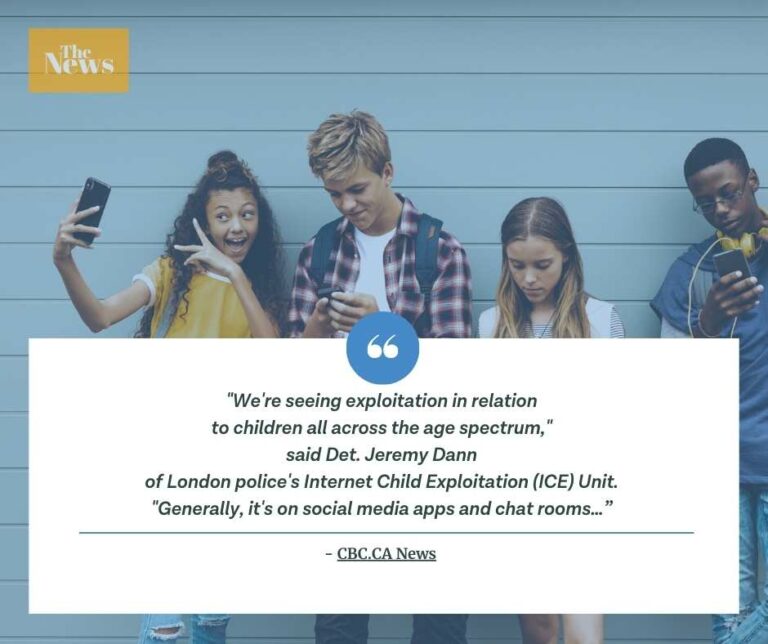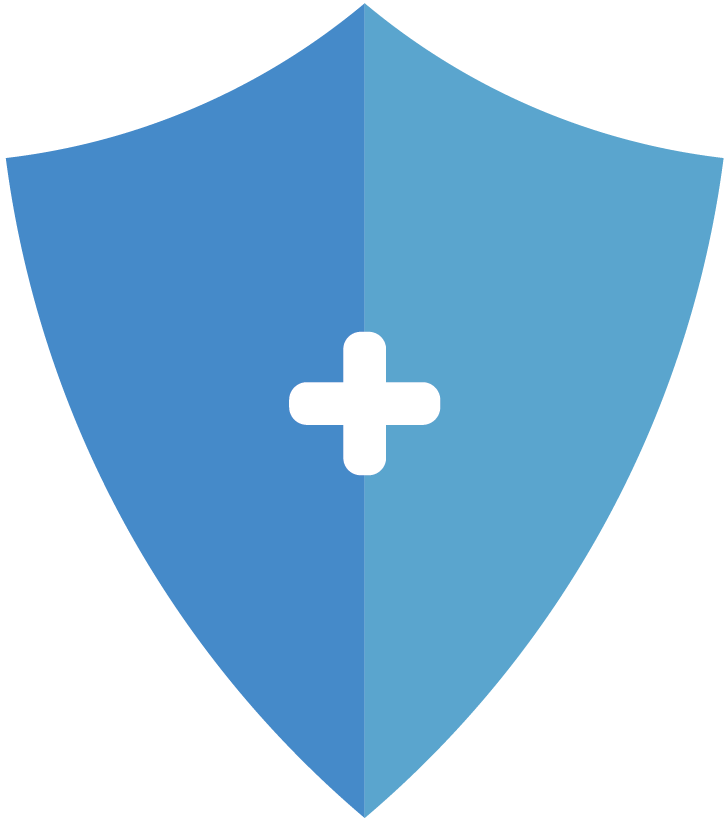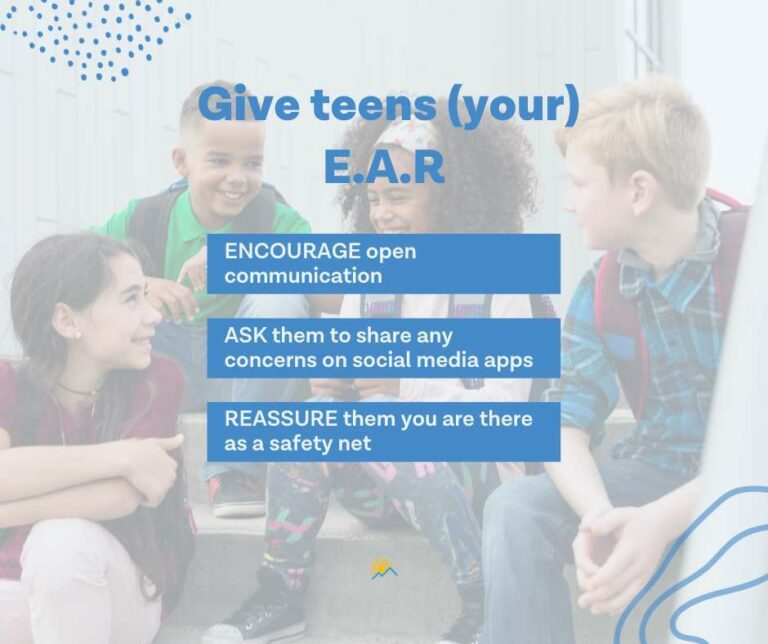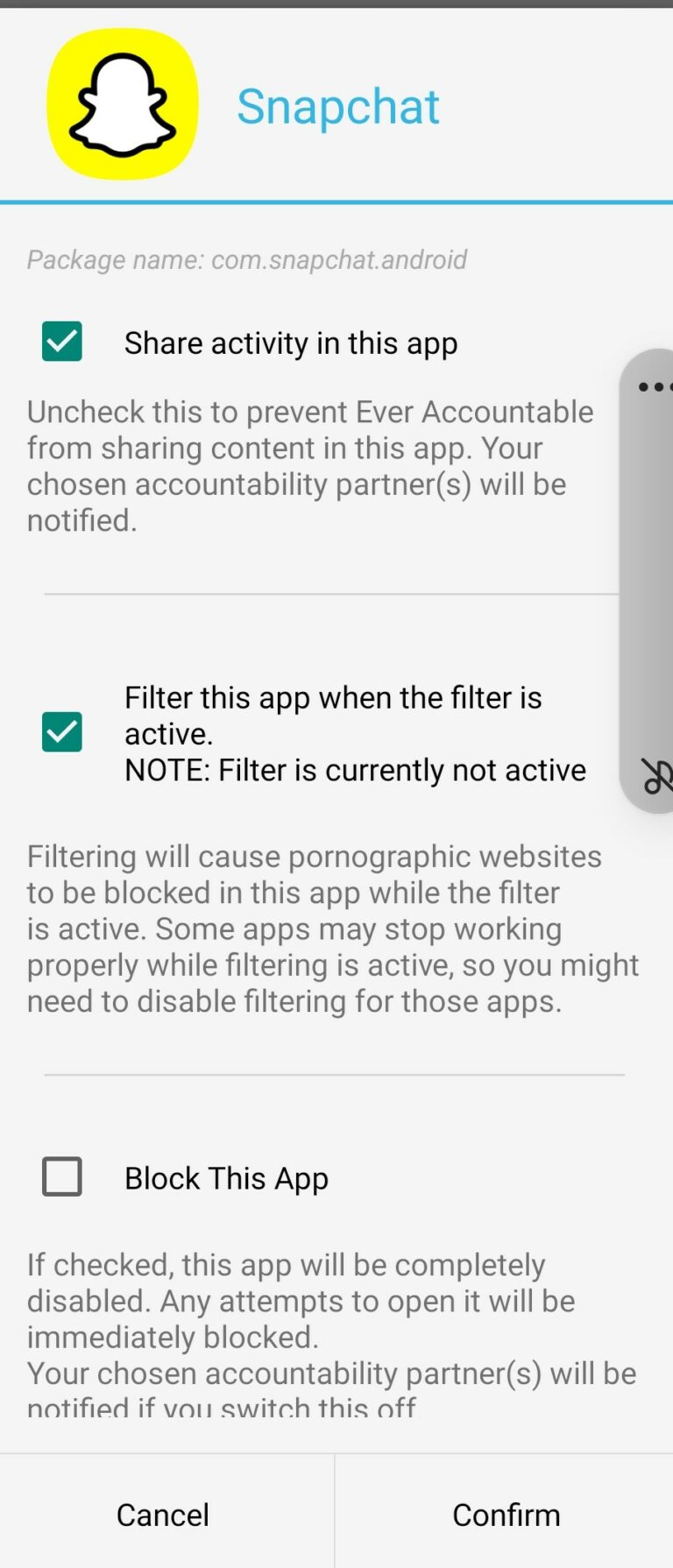Any social media app with private messaging poses a serious risk to teens for exposure to p*rn, predators, and sextortion – as recently highlighted in The Wall Street Journal.
Law enforcement officers are also sounding the alarm.
“We’re seeing exploitation in relation to children all across the age spectrum,” said Det. Jeremy Dann of London police’s Internet Child Exploitation (ICE) Unit. “Generally, it’s on social media apps and chat rooms…” – CBC.CA News
Two recent stories of online predators reveal a tragic pattern being repeated all over the globe.
“He was charged with more than 30 sexual assault offences dating back to 2018. A few weeks later, London police’s ICE Unit arrested a 44-year-old man from Scarborough in suburban Toronto for allegedly luring teens under age 16.
Although unrelated, in both cases, Snapchat was allegedly used to communicate with young people.” – cbc.ca/news/
If you’re doing your diligent detective work on Snapchat safety for teens, we’re here to help with the basics! And even though Snapchat has responded positively to pressures to improve, we felt that parents deserve a detailed guide on how to use Snapchat safely.

A Parent’s Guide to Snapchat Safety for Teens
Already know what a “streak” is on Snapchat? Then Snapchat might already be one of your go-to communication apps! However, we’ve included links to Snapchat’s updated safety tips for parents below.
For the beginners, here are the basics. Snapchat’s unique claim to fame is allowing users to share photos, videos, and messages that disappear after being viewed.
However, this “disappearing act” in 24 hours could lull a user into a false sense of online safety. We’ll get to that in the set-up details.
Being concerned and proactive about your child’s safety using any social media app is good digital-parenting. One of the first things you’ll want to decide as parents is at what age you’d consider it appropriate to use Snapchat.
Snapchat Is Officially For Teens
The official age limit for Snapchat is 13 years old. According to Snapchat’s terms of service, users must be at least 13 years old to create an account. This complies with the Children’s Online Privacy Protection Act (COPPA), which sets guidelines for online privacy and protection of children under the age of 13.
Though Snapchat has an age limit of 13, there’s still no way to verify a user’s age when they sign up. Unfortunately, many younger children are using the app without their parents’ knowledge or consent.
Even worse, adults set up Snapchat and pretend to be a teen. That’s where much of the secret sextortion dangers on Snapchat exist. The state of New Mexico currently has a lawsuit against Snapchat for failing to warn parents and users of this danger.
Notably, the U.S. Surgeon General also stated that 13 is too young for teens to be on social media.
We also hear the stories of teens hooked on porn – a danger we’re seeing inside apps such as Instagram, Twitter, and TikTok. Sadly, even children’s cartoons on YouTube have been targeted by the porn industry.
“I did that with Snapchat. I set up an account, pretending to be 15. Then I just went to the Discover feed, where it pushes content to you based on your age,” she explains. Within seconds, sexualized content and vulgar images appeared, she says. “And I thought, ‘No, this is not appropriate for a 15-year-old.” – Emily Cherkin, (“So your tween wants a smartphone? Read this first” – NPR.org)
Whatever your decision, let’s look at helpful Snapchat safety tips for setting up the app. Plus, we’ll highlight a few danger zones on Snapchat.
How to Use Snapchat
Here’s a pro parent tip: learn how to set up and use Snapchat yourself – ideally, before you allow your child to use Snapchat. That way, you can get the jump on safety settings. Possibly even enlist your teen to help you set up your own Snapchat account first! (Kids are often more tech-savvy than their parents, right?)
Bonus! You’ll learn to enjoy your teens in the high-tech world they face. In fact, some younger teens borrow their parent’s phones to use Snapchat in a safe and very monitored setting. (Another reason to ensure you’re using our accountability app on every device.)
14-Day Free Trial
Protection From Pornography
Change your habits, change your life: Start our 14-day free trial to help get rid of pornography for good.


Snapchat basic set-up steps:
- Download the app. Snapchat is available for iOS and Android devices and can be downloaded from the App Store or Google Play.
- Create an account. To create a Snapchat account, you will need to provide your email address and create a password. Protect your Snapchat account by using a strong, unique password and enabling two-factor authentication. This will help keep your account secure and prevent unauthorized access.
- Keep your account private.
- Key safety hint: Don’t ever use your REAL name. You will also be asked to provide a username that will be visible to other Snapchat users.
- DON’T CONNECT WITH STRANGERS ON THE INTERNET.
- Add friends. You can add friends on Snapchat by searching for their username or by scanning their unique Snapchat code. You can also connect with friends from your phone’s contacts list.
- Take a photo or video. To take a photo or video on Snapchat, simply tap the camera icon on the main screen. You can also swipe left or right to access different camera modes.
- Apply filters and lenses. Snapchat offers a variety of filters and lenses that you can use to enhance your photos and videos. To access these features, swipe left or right after taking a photo or video.
- Send your photos or videos to a friend. Congratulations! You’ve just “Snap-chatted” online.
Top Parent Tips for Snapchat Safety

Here’s the best-kept secret! Before you set your young teen loose on Snapchat, it’s the golden time to set boundaries. Start by having a conversation with your child about the acceptable use of Snapchat.
Important Snapchat safety guidelines and boundaries to discuss:
- How much time they can spend on the app
- What type of content is appropriate to share
- Who they can add as a friend
- Not using their real name on Snapchat
- Not disclosing their location
- What online grooming looks like
- Why cyberbullying and sexting are so harmful
Snapchat safety set-up steps for teens and their tech-challenged parents
- Keep your account private, and don’t use your real name. (Yes, this bears repeating!)
- Check out the Snapchat safety resources for parents.
- Enroll in the Family Center on Snapchat.
- Restrict “Sensitive Content” inside the Family Center.. Reminder: this doesn’t restrict sensitive content sent in private chats.
- Choose “Ghost Mode” (in map settings) but be aware that Snaps submitted to Our Story can still show up on the Snap Map.
- Warn your teen that anything sent in Chats can be screenshotted and shared, so never ever share a nude or sexual content.
- Save this link to the Snapchat Safety Center for reporting problematic Snapchat content
- Create a secret “code” text, if your teen is worried about and wants your help online. (Try something generic but easy, like an odd phrase, “Candy Canes”.)
Finally, we love that Snapchat released safety updates in September of 2023 to address the concerns of parents and law enforcement. More safety measures are needed!
Getting social safely on Snapchat
Sharing Snaps is where the fun is! Don’t be lame or boring, though. (Hello, faceless pics of ceilings and walls, so that you can keep up your 90 day streak.)
Once you have taken a photo or video and added any filters or lenses, you can share your Snap with friends. Select people on your friends list you want to send a Snap to, and then tap the send button.
Individual or group chat with friends is extremely popular on Snapchat. The group chat feature benefits some teens who enjoy Snapchat study groups with friends in real-time. To start a chat, simply swipe right on a friend’s name in your friends list.
Explore Stories as one method of keeping up with your friends’ lives. Snapchat’s Stories feature curates collections of Snaps that are visible to your friends for 24 hours. To view other people’s Stories, tap their username in your friends list.
Snapchat tells you if your Chat has been opened. Also, you can save a favorite Snap photo or chat, if you click the button to the right immediately after opening a Snap.
As a Snapchat safety feature, your friend will be notified if you save a Snap they sent. However, this does not apply to screenshots of Snaps.
14-Day Free Trial
Protection From Pornography
Change your habits, change your life: Start our 14-day free trial to help get rid of pornography for good.

Be open and approachable: give teens an E.A.R.
Talk to your child regularly about safety on all social media platforms, especially since sextortion is rapidly growing. Following these safety tips can help your family implement Snapchat safety.
- E: Encourage your teen to come to you if they see anything on Snapchat that makes them feel uncomfortable.
- A: Ask them to share with you if they receive a message from someone they don’t know.
- R: Reassure them that they can always talk to you about any concerns they may have.
We can help you with social media accountability in many popular social media apps if you use our accountability software.
NOTE: The YouTube app and a few others are automatically checked for sharing in our App Configuration in our latest updates. If you’ve been an Ever Accountable customer for a while, you may need to delete the app and re-install it to get the updated version.
If you need help properly using our accountability app to share social app activity, here are the steps.
App Configuration Snapchat Safety Steps (for Android users only):
- Open the app and go to the Settings tab
- Select App Configuration
- Check to see what apps are on the list.
- Make sure the *Shared* box is checked beside each app that you wish to have activity reported.
- Click *Confirm* at the bottom when enabling sharing on a new app
Also, check out the following guides for maximizing accountability and online safety:

You can also reach out to us with questions at support@everaccountable.com.
We’re here for you!
*Ever Accountable’s blog is not intended to be a substitute for professional advice, diagnosis, or therapy, though we often link to medically reviewed studies.
Works Cited
Doucleff, Michaeleen. “Your child wants a smartphone? What to know about the risks and alternatives: Shots – Health News.” NPR, 12 July 2023, https://www.npr.org/sections/health-shots/2023/07/12/1187130983/smartphone-tween-safe-alternatives. Accessed 7 November 2023.
Jargon, Julie. “Teen Boys Are Falling for a Snapchat Nude-Photo Scam. Here’s How to Avoid It.” The Wall Street Journal, https://www.wsj.com/tech/personal-tech/teen-boys-are-falling-for-a-snapchat-nude-photo-scam-heres-how-to-avoid-it-97a830c8? Accessed 30 November 2023.
“How to Stay Safe on Snapchat – Snapchat Support.” Snapchat Support, https://help.snapchat.com/hc/en-us/articles/7012304746644-How-to-Stay-Safe-on-Snapchat. Accessed 7 November 2023.
Rousay, Victoria. “VICTORY! Snapchat Makes Numerous Safety Changes in Response to Dirty Dozen List.” NCOSE, 7 September 2023, https://endsexualexploitation.org/articles/victory-snapchat-makes-numerous-safety-changes-in-response-to-dirty-dozen-list/?utm_source=linkedin&utm_medium=social&utm_campaign=ncose. Accessed 7 November 2023.
“Surgeon General Issues New Advisory About Effects Social Media Use Has on Youth Mental Health.” HHS.gov, 23 May 2023, https://www.hhs.gov/about/news/2023/05/23/surgeon-general-issues-new-advisory-about-effects-social-media-use-has-youth-mental-health.html. Accessed 7 November 2023.



